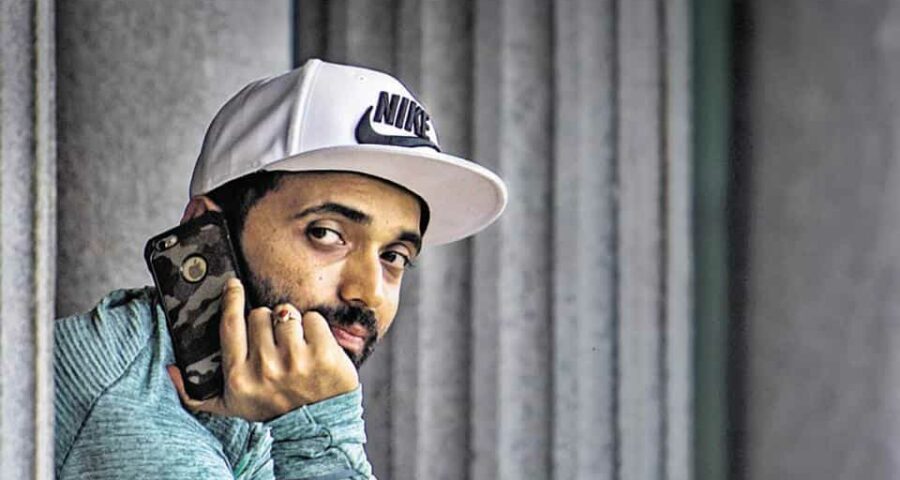Possibly the only excruciating aspect of Ajinkya Rahane’s otherwise elegant batsmanship is his routine between deliveries. Whether he has faced two (as he did when he last visited Melbourne in 2018) or 223 (the span of his century-making innings in the same city this time around), Rahane always tugs at the strap of his gloves and presses the Velcro back in place, one glove a time. Ball after ball, even as the bowler waits at the top of his mark.
Rip. Paste. Refocus.
This isn’t superstition. It’s a repetitive programme that pushes Rahane to stay in the present, and is tailored to help him forget the past. However good or bad that past may have been.
Great shot? Rip. Paste. Refocus.
A swing and a miss? Rip. Paste. Refocus.
A nothing moment? Rip. Paste. Refocus.
But there isn’t enough Velcro in the world to help Rahane forget Team India’s recent past. Before coming into the Test match in Melbourne, he played his part in India’s lowest-ever Test innings score of 36 in Adelaide. Rahane’s contribution was a duck; it was an innings that led to a debilitating loss.
It was also the point at which captain Virat Kohli handed Rahane, 32, the reins for the rest of the four-match series, to go on scheduled paternal leave.
What to rip? Where to paste? How to refocus?
And yet, there the stand-in captain was at the end of the game at the Melbourne Cricket Ground, scoring the winning runs for India and bagging the Man of the Match award for a match, series and era-defining hundred that will live long in the annals of Indian cricket.
That was Rahane’s response, his retribution.
It was his response to having been handed a rather dented baton, marred further by the loss of two great fast bowlers (Ishant Sharma and Mohammed Shami) to injury just before Melbourne began.
His stewardship began with not one but two debutants in the playing eleven. More experienced captains have snapped under lesser burdens. Rahane quietly went about the task at hand, first picking up the pieces and then gluing together the shards to make a new whole. There were no snarky remarks to the press when both fresh faces, Shubman Gill and Mohammed Siraj, came good. Not a hint of rage or aggression during the moments of joy. Just an old-school nod towards the dressing room brought in his century, and a handshake with the umpire marked India’s victory.
This is how Rahane is and always has been. His humility has often been celebrated but his other, more vital, trait of dealing superbly with pressure seldom has. Try cornering him and watch him fly.
Few cricketers, if any, with Rahane’s longevity, have been under the pump for as long as this man from suburban Mumbai has. Immediately after his horrendous Test debut in 2013, when he scored 7 and 1 in Delhi after having spent close to two years on the bench, Rahane was made to fight for his place in a country India is yet to win a Test series in, South Africa. He scored over two hundred runs across two Tests.
Five long years later, when India returned to South Africa, even his seniority and reputation for being the country’s best batsman in difficult, overseas conditions couldn’t save him from the axe. Vice-captain Rahane was dropped by the team management for the Tests in Cape Town and Centurion. India lost both. When he was brought back, in Johannesburg, Rahane answered with a match-winning 48 on a low-scoring pitch.
The flow of his runs had been staggered between then and now. But after the humiliation at Adelaide, it was a different sort of pressure Rahane encountered. Until then, he had only fought for his own pride. In Melbourne, he walked out to bat with the ego of a team and a cricket nation at stake. For 17 balls, he didn’t score a run. Just conscientiously refastened his gloves after each delivery.
Rip. Paste. Refocus.
Then Rahane got off the mark and his team collectively let go of the past.
Get Latest Cricket Updates, Live scores and Top news on HT Cricket.
Source: Read Full Article

